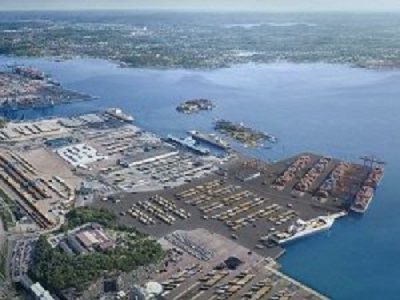
Posted on April 4, 2017
The Port of Gothenburg is planning to make use of contaminated clay from the seabed to build a new freight terminal at the outer port area at Hisingen, covering 220,000 square metres. The method is currently being tested as part of large-scale field trials using the dredging spoils from routine maintenance at the Göta Älv river.
Dredging spoils in the river are contaminated by a variety of substances, including tributyltin (TBT), an environmental toxin that can disrupt hormone levels. Until 2008, it was included as an antibiocide in antifouling paints used on the hulls of ships and boats. To ensure the spoils can be enclosed safely without seeping into the surroundings, exhaustive trials are being conducted. Project Manager at the Port of Gothenburg Eduardo Epifanio, said:
“There is no suitable landfill site for contaminated spoil volumes of this size. This is a good way of using the spoils and at the same time helping to clean up the river. It worked well in the laboratory and now it will be tested on a larger scale. It is important to ensure that no environmental toxins escape into the water and that the strength and durability specifications are met.”
With the method already tested in laboratory conditions, large-scale field trials are about to commence using dredging spoils taken from the area around the Göta Älv Bridge. The field trials include testing two different combinations of materials. The first involves mixing the spoils with cement and slag, and the other involves mixed the spoils with cement, slag and fly ash – a considerably cheaper and eco-friendlier alternative. The field trials will continue until Easter. The results will then be evaluated.
Contaminated dredging spoils from the area around the Göta Älv Bridge are transported by barge to Arendal Bay. There the spoils are mixed with different combinations of binding agents (cement, slag and fly ash). The spoils are then pumped into two cells, which are compared with each other. These are enclosed by a stone embankment and sheeting to prevent the contaminants from seeping into the river. The spoils will then be covered by a superstructure that will be 1.2 metres thick.
Source: Handy Shipping Guide





